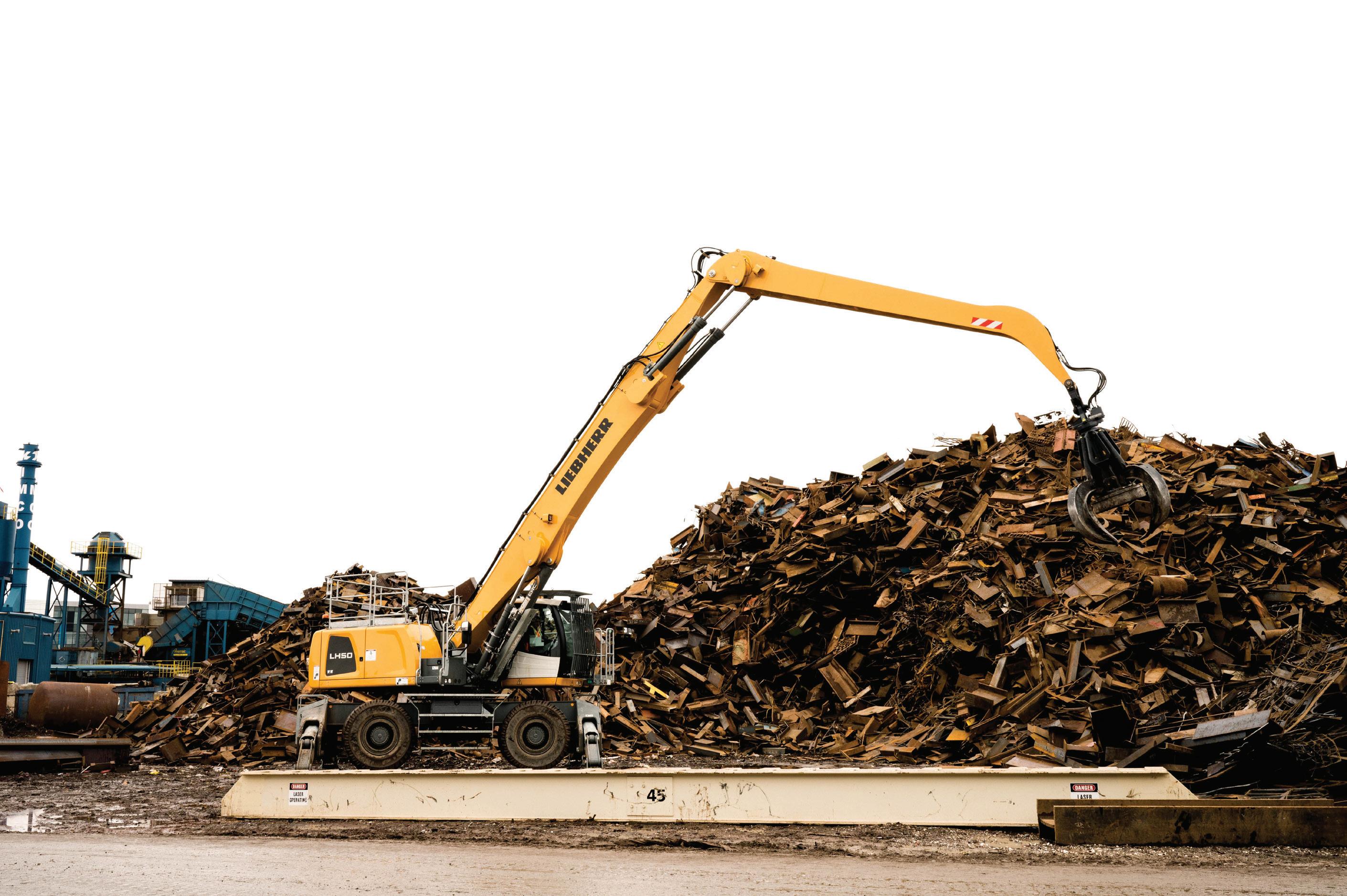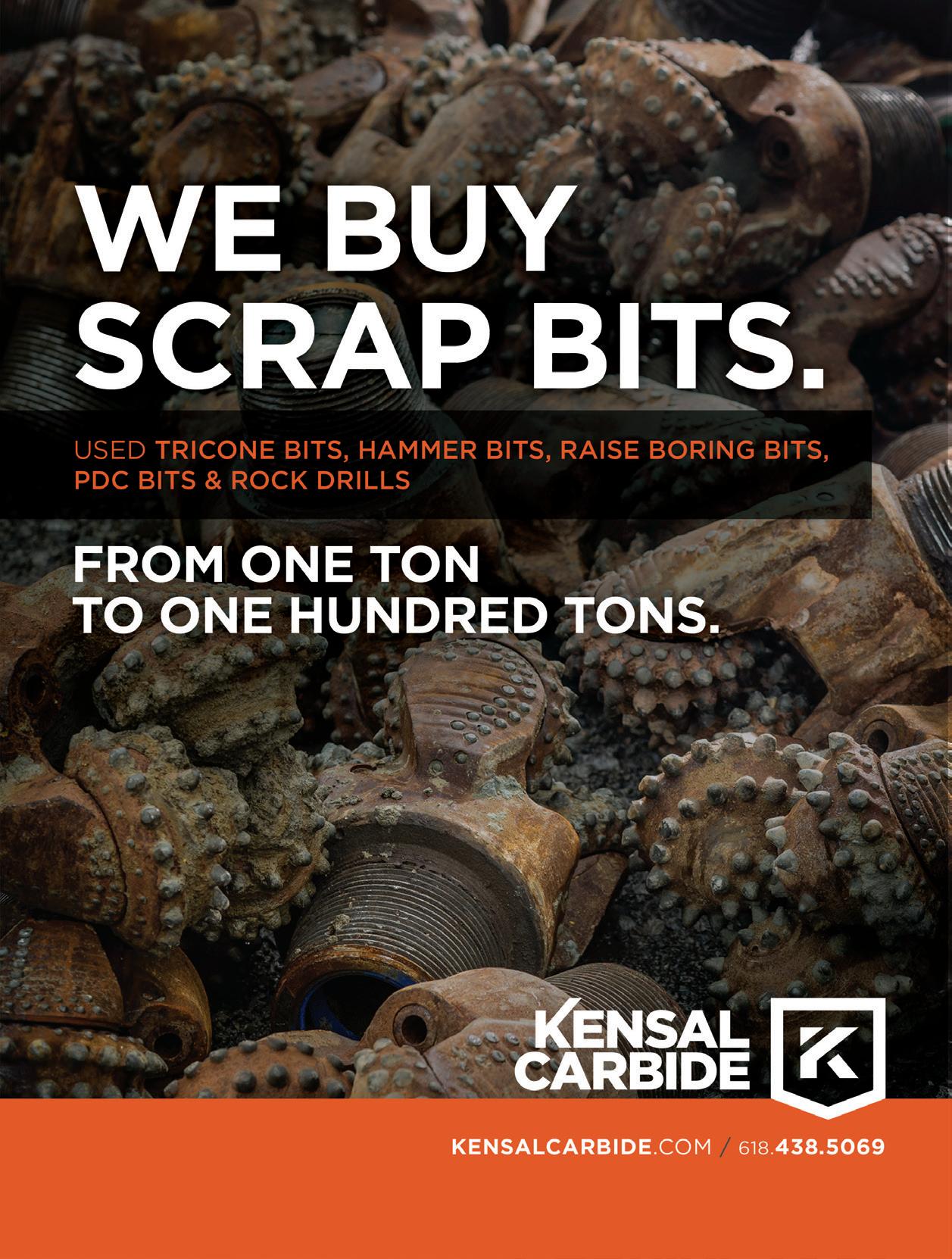
6 minute read
COMMODITY FOCUS: FERROUS
FERROUS SCRAP MARKET
LOOKING FOR A REBOUND IN 2020
BY JOE PICKARD

Heading into 2020, ferrous scrap recyclers in North America had ample reason to be optimistic. Following a very difficult 2019 that saw benchmark prices for No. 1 Heavy Melt fall from more than US$300 per gross ton in January 2019 to nearly $180 per ton at the start of the fourth quarter, market sentiment improved significantly in the first quarter of 2020. The trade outlook improved considerably with the passage of the United States–Mexico–Canada Agreement (USMCA) and phase one of the U.S.–China trade deal early in the year, along with China’s expected reclassification of certain scrap metal grades from waste to raw materials. U.S. monetary policy was more accommodative late in 2019 and became even more so in early 2020 with the half point rate cut announced in mid-February 2020 (followed by a commensurate Canadian rate cut), which could help revive North American business investment levels.
Additionally, the economic fundamentals in North America remain mostly solid with continued healthy U.S. nonfarm job gains in February (+273,000), low unemployment rates, and signs of improved factory orders and construction spending. The World Steel Association reports crude steel production the United States increased 2.5 percent year-on-year in January 2020 to more than 7.7 million metric tons, helping to offset the struggling steel production trends in Canada and Mexico.
TRADE FLOWS IN FOCUS
U.S. ferrous scrap exports, excluding stainless steel and alloy steel, grew by a modest 1.2 percent in 2019 to nearly 15.9 million metric tons as improved shipments to Turkey, Malaysia, Saudi Arabia,

2018
86.6 87.9
20.2 18.6 13.4 12.8
2019
U.S. Mexico Canada
Steel production in North America, 2018 vs. 2019. Million metric tons. Source: World Steel Association.
Vietnam, Bangladesh and others more than offset weaker business with Egypt, China and Mexico. Turkey not only retained its place as the largest export destination for U.S. ferrous scrap, but also posted the largest net volume gain (+524,000 mt to more than 3.9 million tons) last year. Improved Turkish buys early in 2020 helped to underpin domestic ferrous scrap prices, although obsolete scrap tags were only seen as holding steady late in the first quarter.
On the import side of the equation, the American Iron and Steel Institute reports the “U.S. imported a total of 3,135,000 net tons of steel in January 2020, including 1,633,000 net tons of finished steel (down 9.9 percent and 33.4 percent, respectively, vs. January 2019).” According to AISI, the largest volume of U.S. finished steel imports came from South Korea, Brazil, Japan and Turkey. Meanwhile, Argus Media reports that “The US International Trade Commission decided against placing dumping duties on fabricated steel imports from Canada, China and Mexico in a rare trade case win for importers.”
ISRI COMMENDS CANADA’S RATIFICATION OF USMCA AGREEMENT The Institute of Scrap Recycling Industries (ISRI) has commended Canada on the achievement of royal assent of the U.S.–Mexico–Canada Agreement (USMCA) from Governor General Julie Payette, following a decisive victory in the Canadian Senate during the second week of March. This follows ratification by Mexico in 2019 and by the United States in January and makes the agreement officially final.
“The USMCA is a win for the North American recycling industry,” says ISRI President Robin Wiener. “The market and policy certainty that comes with the agreement will support the 130,000 U.S. jobs that depend on strong regional trade for scrap commodities and the industries that depend on these critical materials. We look forward to a swift implementation process in order to gain immediately from the agreement.”
Key components of the agreement include: maintained tariff-free access in Mexico (U.S. and Canada are already tariff-free); improved and accelerated customs clearances; indirect recognition of ISRI Specifications as industry standards; and increased demand for scrap through enhanced auto rules of origin requirements.
CORONAVIRUS AND OTHER CONCERNS CLOUD THE OUTLOOK
Heading into 2020, a number of North American steel manufacturers had announced major capacity expansion plans, with accompanying gains expected in ferrous scrap consumption. But concerns about end-market demand and recent coronavirus worries may be having a dampening effect on investment plans, despite the recent Fed rate cuts. For example, Fastmarkets AMM reports “Executives at BlueScope warned that the escalating spread of the novel coronavirus (2019-nCoV) could delay the $700-million expansion of its electricarc furnace (EAF) operations in Ohio, due to supply chain disruptions. The potential interruption would not be “significant,” Mark Vassella, chief executive officer of the Australian steel producer, said during the company’s half-year earnings call on Monday, February 24.” In addition, Argus reports “Liberty Steel confirmed it has put its new EAF install on hold at its Georgetown, South Carolina, wire rod mill while it revaluates. The existing melt shop was idled in September 2019. Liberty has been supplying the mill with billet from its Illinois mill (ex-Keystone). Also for the record, it closed on its acquisition of bankrupt bar mill Bayou Steel on January 31.”
FERROUS MARKET FORECAST
Looking forward, the World Steel Association projects Chinese steel demand will only grow 1.0 percent in
Steel Mill Product Jan. 2020 Prelim. Dec. 2019 Final % var Jan. vs. Dec. YTD 2020 (1 mo.) YTD 2019 (1 mo.) % var 2020 vs 2019
Ingots and Billets and Slabs 1,500,092 226,942 561.0% 1,500,092 1,027,278 46.0% Sheets & Strip Galv Hot Dipped 247,029 158,013 56.3% 247,029 271,718 -9.1% Sheets Hot Rolled 173,623 164,991 5.2% 173,623 205,860 -15.7% Sheets Cold Rolled 142,146 142,136 0.0% 142,146 174,650 -18.6% Oil Country Goods 126,307 116,210 8.7% 126,307 333,495 -62.1% Bars – Reinforcing 106,623 45,613 133.8% 106,623 128,278 -16.9% Plates in Coils 85,476 96,801 -11.7% 85,476 124,855 -31.5% Wire Rods 73,024 43,902 66.3% 73,024 134,779 -45.8% Line Pipe 71,848 69,540 3.3% 71,848 327,542 -78.1% Sheets & Strip All Other Metalic 70,564 31,256 125.8% 70,564 79,924 -11.7% Bars – Hot Rolled 65,418 66,794 -2.1% 65,418 90,929 -28.1% Mechanical Tubing 64,400 45,027 43.0% 64,400 61,798 4.2% Wire Drawn 60,562 45,544 33.0% 60,562 67,275 -10.0% Standard Pipe 59,925 53,065 12.9% 59,925 70,294 -14.8% Tin Plate 41,962 45,222 -7.2% 41,962 64,541 -35.0% Structural Shapes Heavy 40,764 20,557 98.3% 40,764 60,426 -32.5% Structural Pipe & Tubing 33,007 33,811 -2.4% 33,007 41,537 -20.5% All Other 172,271 180,134 -4.4% 172,271 214,953 -19.9% TOTAL 3,135,043 1,585,558 97.7% 3,135,043 3,480,132 -9.9% SUBTOTAL Finished Imports 1,633,092 1,356,594 20.4% 1,633,092 2,451,290 -33.4%
U.S. steel imports.
2020 while steel demand in the rest of the world will increase 2.5 percent, driven by 4.1 percent growth in emerging and developing economies excluding China. As a result, global steel demand is forecast to grow 1.7 percent to 1,805.7 million metric tons in 2020, down from the 3.9 percent growth rate in 2019. But as with other commodities, any improvement in global trade relations could have outsized implications for the global steel and ferrous scrap markets. According to the U.S. Trade Representative’s press release earlier this year, China has agreed to import at least $120 billion of U.S.- manufactured goods in 2020, including iron and steel products. Improved trade deals with between trading partners including the U.S., China, Canada and Mexico will play an important role for the North American iron and steel industries, along with ferrous scrap availability, pricing, and steel capacity expansion plans.
Joe Pickard is the chief economist and director of Commodities at the Institute of Scrap Recycling Industries (ISRI) located in Washington, D.C.
Car-Go-Net ® “The preferred disposable”





• Fused joints won’t unravel • Complies with CSA 2010 load securement requirements • In stock for immediate shipment
1-800-328-8456 www.industrialnetting.com










